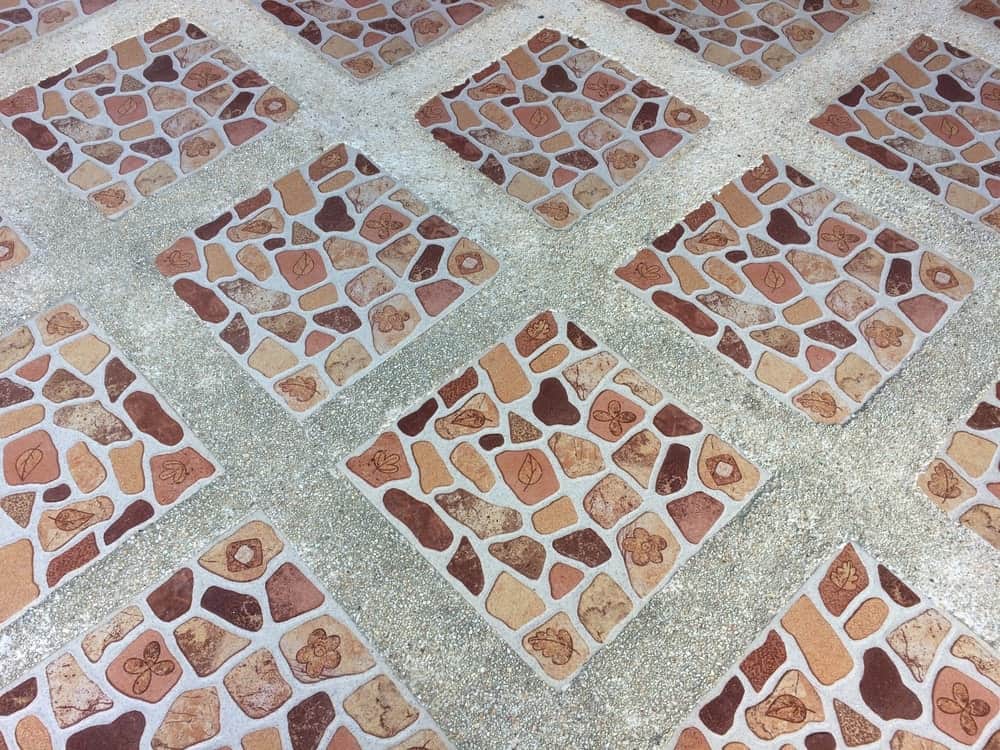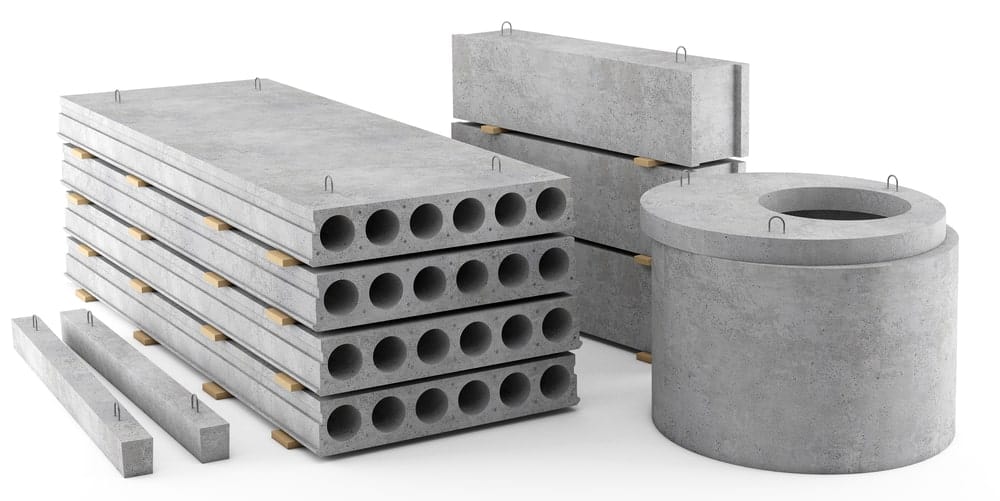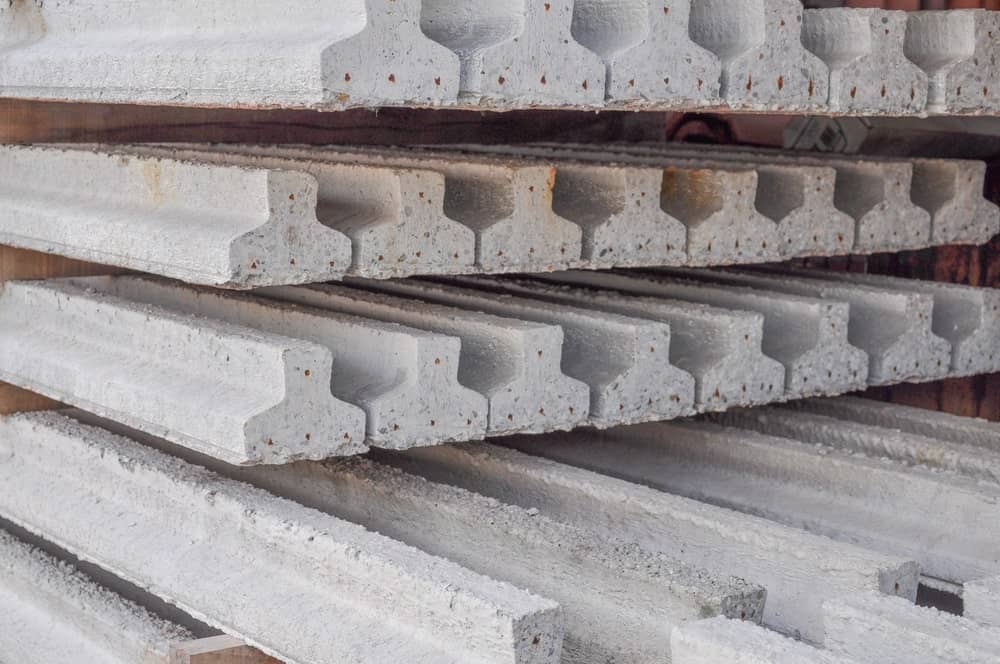
Concrete is a highly versatile material that serves a wide range of purposes including interior walls for living rooms and other rooms. From large commercial buildings to laying simple pathways to residential construction to concrete living room walls, concrete is used all around us.
Generally, all types of concrete have the common ingredients of cement, water, and mixtures of sand and stone. However, a number of different materials are used to add different properties to the concrete and hence make them useful for different applications.
Whether you’re looking to execute a large scale project or are interested in constructing a domestic building, the concrete mix that you choose will have a huge impact on the success of the project. Needless to say, selecting the right type of concrete is crucial for any kind of construction.
Here are the most common types of concrete:
Ready-Mix Concrete
Ready-mix concrete is the type of concrete manufactured in a factory and then delivered to the construction sites via trucks comprising of in-transit mixers.
It is manufactured under controlled operations and transported and placed at sites using highly sophisticated vehicles and methods. This means that the already produced specialty concrete mixtures will just have to be poured at the construction site.
While ready-mix concrete started being produced in the 1930s, it wasn’t until 1960s that its market began to expand. The reason why ready-mix concrete is preferred over on-site concrete mixing is that it helps reduce worksite confusion and offers a mixture with high precision.
However, construction sites are often too far from the factories where ready mix concrete is produced and mixed. This type of concrete generally needs to be used within 210 minutes of being mixed at the factory.
Use of admixtures like retarders becomes essential in case of long distances to preserve the concrete for use.
Source: IPFS
Volumetric Concrete
Volumetric concrete is used as an alternative to ready-mix concrete to overcome the problem of curing the concrete in the long distances between the factory and construction sites. After mixing, it is important to maintain the right moisture and temperature conditions to keep it in the usable form.
Volumetric concrete makes use of specialized trucks known as volumetric mobile mixers that carry concrete ingredients and water to be mixed at the construction site. This helps eliminate any travel delays that can cause the pre-mixed concrete to become unusable.
The fully mobile volumetric mixer serves here as a batching plant. This also allows you to pay for what you use as well as adjust the mix design to suit your construction needs and site conditions.
Volumetric concrete is especially useful when two separate mixes are required for different projects at a single site so that the concrete can be mixed on demand. Some common applications include large sites, multi-projects, basement constructions, etc.
Source: The concrete network
Decorative Concrete
Decorative concrete is the type of concrete that has been treated in a variety of ways to increase its aesthetic appeal. For instance, it may go through processes like coloring, texturing, molding, polishing, embossing, etching, embedding items, applying decorative toppings and so on.
Various materials are used in producing decorative concrete such as color hardener that offers a unique color as well as a highly durable surface; Integral color is usable on any texture and application. Finally, chemical stain gives a natural stone look by producing an uneven, translucent color.
Hence, decorative concrete is ideal for projects in which you’re looking to make an aesthetic impact. It is also used to add elements of dynamism to unexciting surfaces and material. Some common applications include decorative flooring, swimming pools, paving and implement architectural features.
Source: American concrete institute
Related: Types of Concrete Blocks | Types of Concrete Saw | Modern Concrete House | Stamped Concrete
Rapid-Set Concrete
Rapid-set concrete is the perfect mix when you’re short of time in completion of construction projects. It offers faster set times and is highly resistant to low temperatures. This means it is an ideal type of concrete to be used for winters when the cold doesn’t permit the use of ordinary concrete.
Roll Compacted Concrete
This type of concrete is compacted by heavy rollers to make it strong and dense enough to be able to withstand heavy loads and vehicles.
While it is deployed in a similar manner to asphalt, roll-compacted concrete utilizes lesser energy for production and requires less finishing and formwork. Additionally, the production of roll compacted concrete results in lesser emissions, benefitting the environment.
Roll compacted concrete is used for road works, pavements, airport taxiways, car parks, and industrial surfacing.
Source: Easymix concrete
Reinforced Concrete
Reinforced concrete is the type of concrete that goes through reinforcement, giving it the strength to withstand strong tensile stresses. While plain concrete is fine in compression, it lacks tensile strength.
Reinforced concrete offers the combination of both the properties: high compression as well as the ability to bear tensile stresses. Reinforcement of concrete is carried out using steel in the form of rods, bars, meshes, and steel fibers.
While reinforcement, it is important to establish a close bond between the concrete and the reinforcement steel. This bond would eventually determine the durability and strength of the resultant concrete.
This concrete is commonly used in the construction of bridges, columns, ceilings and other structures that need to be strong.
Pre-stressed Concrete
Pre-stressed concrete is a special type of concrete that goes through the process of pre-stressing to achieve the required shape. Before the final application, concrete bars or tendons are pre-stressed during the mixing and placing processes.
The concrete bars are held from each end and placed firmly. As soon as the concrete bars set and harden, they are put in compression. In this way, the lower portion of the concrete bars is made stronger to withstand the tension.
Since the pre-stressing process requires heavy equipment and labor skills, it is completed on the site. Common applications of prestressed concrete include bridges, heavy-loaded structures, and flyovers.
Source: The constructor
Pervious Concrete
Pervious concrete is another type of concrete used in the construction of roads and pavements. It is designed to overcome the problems of storm-water runoff and replenishment of local watersheds.
Pervious concrete has the ability to absorb water rather than allowing it to puddle. This helps reduce hydroplaning, snow buildup and tire spray, making the pavements safer for pedestrians and drivers. This also helps reduce the need for storm sewers and curbing.
It’s the structure of the concrete that gives it the property of water absorption. Like other types of concrete, pervious concrete is made from a mixture of cement, water and coarse aggregates.
However, the mixture contains no sand, leading to a porous open-scale structure, allowing water to pass through easily. Some types of porous pavement made of pervious concrete can allow 3-5 gallons of water to pass through per minute, making it an ideal structure to control stormwater drainage.
Pervious concrete pavements also offer improved filtration and the ideal amount of surface area to catch chemical pollutants and oil, which isn’t the case with traditional concrete or asphalt.
While pervious concrete is ideal for pavements and low-volume applications such as residential streets and parking lots, it isn’t appropriate for full-scale use on high-traffic roadways. This is because its void structure doesn’t have load-bearing properties that other types of concrete have.
Source: Roads & bridges
Asphalt Concrete
Asphalt concrete, more commonly called as just asphalt, is a composite material used in the construction of roads, airports, highways, parking lots and other kinds of pavements.
The use of asphalt for road construction began in the late 1800s and the market for asphalt expanded as the automobile industry grew. Since then, there have been enormous strides in the development of asphalt technology. Today, highly sophisticated equipment and techniques are used to construct asphalt pavements.
Asphalt is known to carry a number of desirable properties such as durability, workability, fatigue resistance, skid resistance, stability, impermeability, and flexibility. However, to make sure that these properties function, asphalt concrete mixture must be properly designed, produced, and placed.
Different types of asphalt mixes are designed to serve various functions. For instance, the base asphalt mixes have entirely different functions in pavement structure than asphalt surface mixes. Hence, both are produced differently.
Various different types of asphalt concrete mixes are available to create different structures. For instance, the asphalt mix used in the construction of roads needs to withstand tough weather conditions and high traffic.
Thus, to cope with the applied pressure from vehicle wheels, it should be sufficiently stiff and to resist cracking exerted by other pressures, it should possess adequate flexural strength. Hot mix asphalt is the ideal mix for such high-traffic roads.
Following are the three different types of asphalt mixes available:
Hot Mix Asphalt
Hot mix asphalt is produced at extremely high temperatures between 150°C and 190°C. Based on the use, various mixtures can be made including porous asphalt, asphalt concrete for very thin layers, double-layered porous asphalt and so on.
Warm Mix Asphalt
Unlike hot mix asphalt, warm mix asphalt makes use of lesser energy and is produced at 20°C to 40°C of temperatures. The temperature is low even during the paving operations, ensuring safety for the working crew and earlier opening of the road for use.
Cold Mix Asphalt
Cold mix asphalt is commonly used for roads with lighter vehicle traffic. Its production doesn’t require heating as it makes use of a specific bitumen emulsion. The emulsion breaks during compaction or mixing and coats the aggregate. Over time, this coating increases the asphalt’s strength.
Source: Virginia asphalt association
Glass Concrete
Glass concrete is used to describe the integration of glass into exposed concrete, opening up a whole new set of architectural design. Not only does it improves the aesthetic appeal of surfaces, but also provide long term strength and thermal insulation.
It is used in residential as well as commercial applications in a variety of ways. Distinctive splashes of colored glass are incorporated in large format slabs used in flooring. Similarly, shining glass aggregates are added to concrete facades.
Source: Hering architectural concrete
Polymer Concrete
Polymer concrete is an aggregate mixture that uses a certain epoxy binder to cure and harden into place. Its primary ingredients include water, sand, and gravel.
While the most commonly used mixtures in producing polymer concrete include vinyl ester, polyester, and normal epoxy, other kinds of polymer resins may also be used that can help in pouring and hardening of the concrete.
Based on the type of resin used, polymer concrete offers numerous benefits. If resistance to weathering is the priority, acrylic binders should be used that set very quickly. To get a strong material, the ideal resin is epoxy that creates a strong material that hardly shrinks while curing.
Moreover, polyurea resins can replace formaldehyde or phenolics in various construction projects. Finally, furan resins can bear high temperatures.
Owing to its characteristics, polymer concrete is considered safer and more durable than ordinary concrete and is used in various types of construction projects. It can be used to provide a base or structure as well as to join two separate components.
Because of its high durability and resistance to different types of corrosion, it’s an ideal material for industrial and electrical construction projects.
A special type of polymer concrete, known as polymer mortar is created only from a binder and fine aggregate-like sand. It tends to be smoother and is primarily used to join objects such as regular mortar and to coat objects for protection.
However, the chemicals used by polymer concrete can be extremely dangerous. Therefore, protective measures must be taken by workers such as the use of masks and gloves. Additionally, when preparing polymer concrete, mixing should be done thoroughly and precisely. And if it’s mixed beforehand, curing will be required to preserve it for use.
Source: Hunker
Vacuum Concrete
Vacuum concrete is the type of concrete in which the excess water is removed to improve concrete strength. All the water used for mixing is not required for hydration so it’s removed before hardening takes place. To remove the water, vacuum pumps containing vacuum mats are commonly used.
Not only is the final strength of the vacuum concrete improved by 25%, but its stiffening pace also improves such that the form-works can be removed within 30 minutes of casting even on high columns.
This allows frequent reuse of forms, making it extremely economical. Vacuum concrete is characterized by higher density and increased bond strength. It can also be used for resurfacing old surfaces since it bonds well with old concrete.
Vacuum concrete is ideal for structures that frequently subject to flowing water at high velocity. This is because the uppermost 1/16 inch of its surface is highly resistant to abrasion and the entire surface is generally free from pitting.
Source: Civil today
Air Entrained Concrete
Air entrained concrete is the type in which air is intentionally infused in the form of thousands of uniformly distributed particles through by adding certain foaming agents such as resins, fatty acids, and alcohol.
The entrained air accounts for 3 to 6% of the concrete. This is done to make the concrete resistant to abrasion, scaling, and deterioration due to freezing and thawing.
Lime Concrete
Lime concrete is the type of concrete in which lime is used as binding material along with other aggregates. It is mainly used in floors, vaults, and domes. Unlike cement, lime concrete is renewable and offers environmental as well as health benefits.















